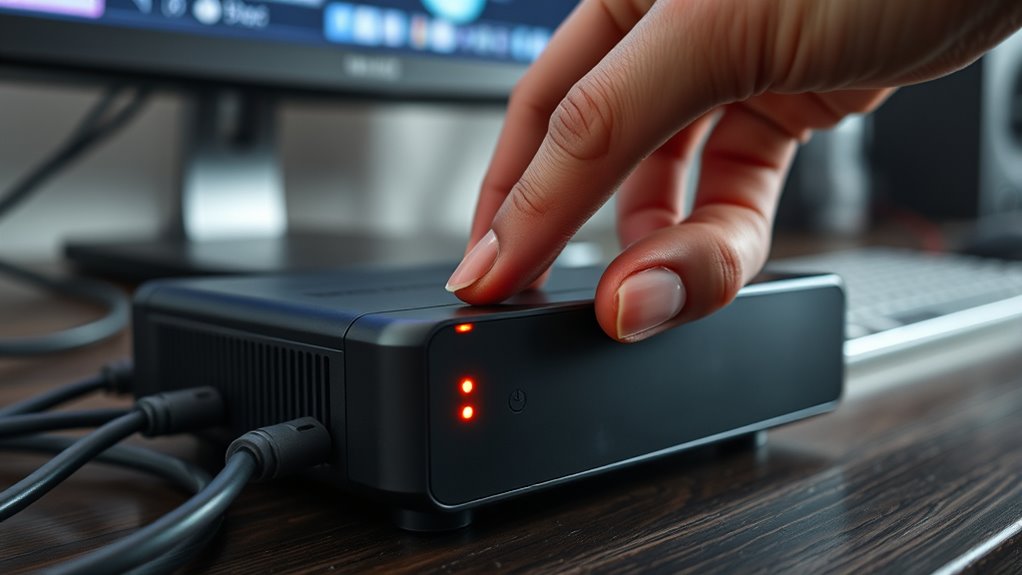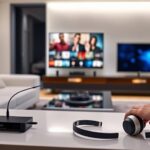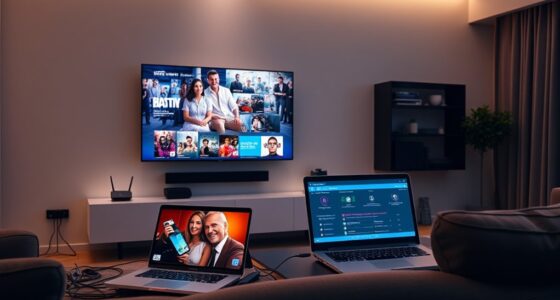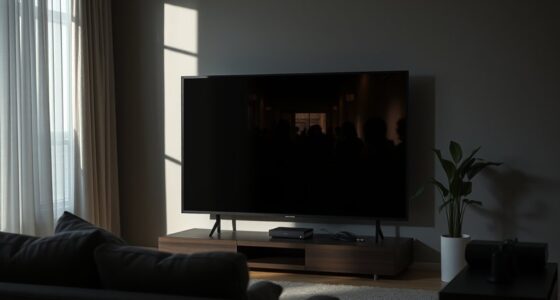To adjust audio sync on your streaming device, first go into the settings menu and locate options like “audio delay,” “lip sync,” or “audio sync adjustments.” Use these controls to make small, incremental changes—just a few milliseconds—while testing with scenes containing clear dialogue. Keep adjusting until the audio matches the lip movements naturally, without causing echos or unnatural timing. If you’d like detailed steps, there’s more you can try to perfect your viewing experience.
Key Takeaways
- Locate audio delay or lip sync settings in your device’s sound or audio menu.
- Use small, incremental adjustments of a few milliseconds to correct sync issues.
- Test adjustments with scenes containing clear dialogue to ensure natural lip movements.
- Utilize external soundbars or AV receivers with built-in audio delay controls if available.
- Aim for a barely noticeable sync correction to maintain a seamless viewing experience.
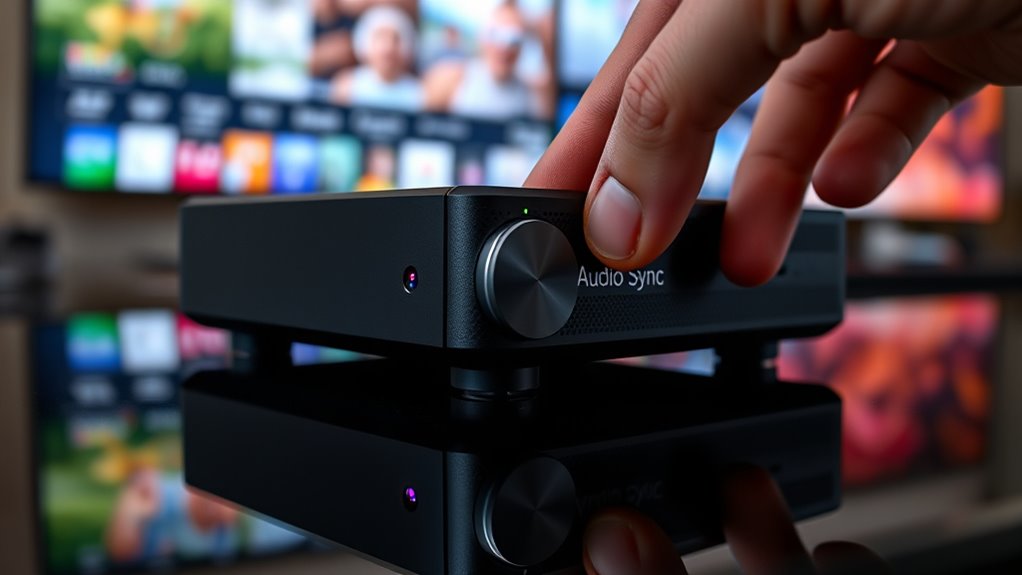
If your video and audio are out of sync, it can disrupt your viewing experience and make it hard to follow along. Lip sync issues are common when streaming content, but the good news is you can fix them with some simple audio delay adjustments. When you notice that the spoken words don’t match the movement of characters’ lips, it signals a timing problem that’s frustrating to watch. Fortunately, most streaming devices and TVs have built-in settings that let you fine-tune the audio delay so everything lines up perfectly.
To start, you need to locate the audio sync or lip sync settings on your device. On many smart TVs, these options are available in the audio or sound menu. If you’re using a streaming device like a Roku, Fire TV, or Apple TV, you’ll find similar controls within their settings menus. Once you access the audio settings, look for options labeled “audio delay,” “lip sync,” or “audio sync adjustments.” These settings typically allow you to delay the audio by milliseconds, giving you precise control over the timing between sound and picture.
Making audio delay adjustments is straightforward. Begin with small changes—usually a few milliseconds at a time—and test the result by playing a scene with clear dialogue. Pause and rewind if necessary to compare the lip movements with the audio. Keep adjusting until the speech matches the lip movements smoothly. Remember, the goal isn’t to eliminate all delay but to minimize the lip sync issues so that they’re barely noticeable. It can take a few tries to get it just right, especially with different streaming sources or content formats. Additionally, understanding the content format can help you identify why sync issues occur and how to better address them.
If your device doesn’t have a built-in option for audio delay adjustments, you might consider external solutions. Many soundbars and AV receivers offer this feature, allowing you to set the delay directly on the hardware. Additionally, some apps and media players have their own sync controls, which can help if the problem is specific to certain streaming platforms. Be aware, though, that excessive delay adjustments can cause other issues, like echo or lip movements appearing too far ahead, so find a balance that works for your setup.
Frequently Asked Questions
Can I Adjust Audio Sync on All Streaming Devices?
Yes, you can adjust audio sync on most streaming devices. Many devices offer a sync adjustment feature to fix audio delay issues. You typically access this setting through the audio or sound menu, where you can fine-tune the audio delay until it matches the video perfectly. Keep in mind, the process varies by device, but most modern streaming platforms provide this convenient option for a better viewing experience.
What Causes Audio Lag During Streaming?
You might think audio delay is unavoidable, but it’s often caused by network issues, device processing delays, or incompatible audio formats. When streaming, your device processes video faster than sound, creating a mismatch in sound timing. This lag results in audio delay, making dialogue seem out of sync. Ensuring a stable internet connection, updating your device, or adjusting audio settings can help fix these issues and restore proper sound timing.
How Do I Know if My Audio Is Out of Sync?
You’ll notice your audio is out of sync when lips move before or after the sound, causing lip sync issues. To detect audio delay, listen carefully for delays between speech and lip movement, or watch for echoing or muffled sounds. If you see these signs, it’s a clear indicator of audio delay detection problems, and you’ll need to adjust your streaming device’s audio settings to fix the sync.
Will Adjusting Audio Sync Affect Video Quality?
Adjusting audio sync is like tuning an instrument—it won’t affect your video quality. When you tweak the audio delay for sync adjustment, you’re fine-tuning sound without marring the picture. Think of it as aligning a dance partner—smooth and seamless. So, don’t worry; your video remains crystal-clear while you perfect the harmony between sound and sight. The goal is flawless synchronization, not compromised picture quality.
Are There Automatic Tools to Fix Audio Delay?
Yes, there are automatic correction tools that detect delay and fix audio sync issues. Many streaming devices and apps feature delay detection, which automatically adjusts the audio to match the video. You can enable these features in your device settings or use third-party apps designed for delay correction. These tools make it easy to maintain perfect sync without manually adjusting settings, ensuring a seamless viewing experience.
Conclusion
Remember, when it comes to audio sync issues, patience is key. Adjusting your streaming device might take a little trial and error, but don’t get discouraged. As the saying goes, “A stitch in time saves nine,” so take the time to fix it now and enjoy seamless viewing later. With a little persistence, you’ll have your audio perfectly aligned, making your streaming experience smooth and enjoyable every time.
